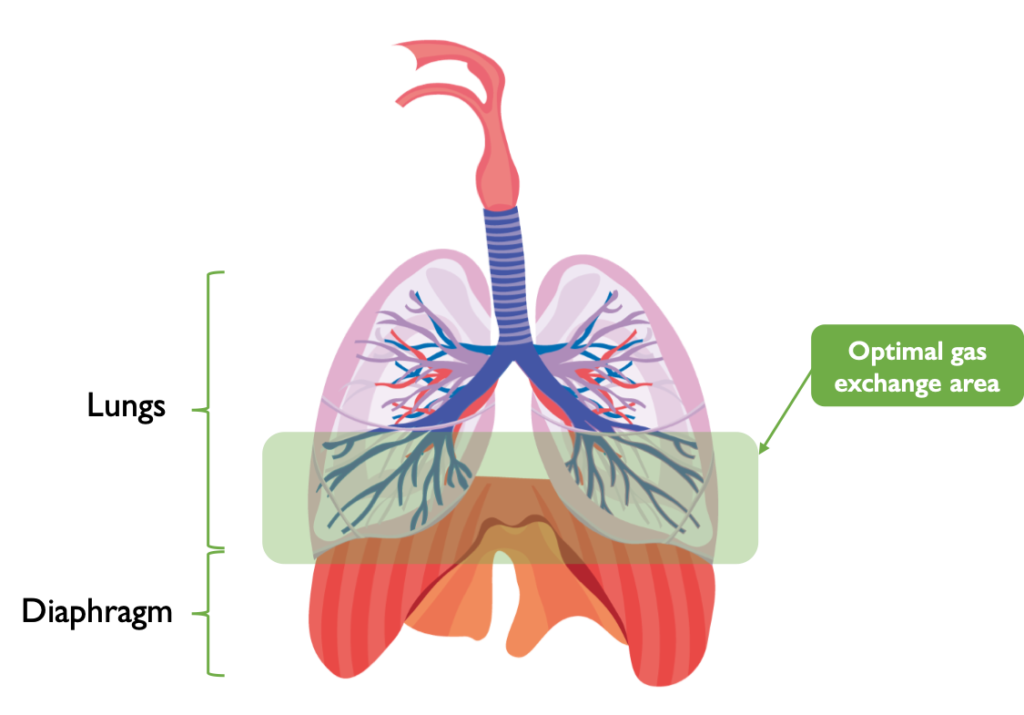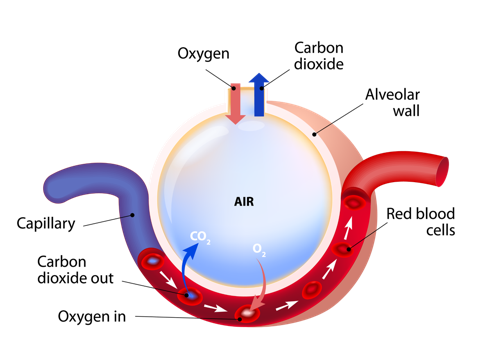
What Exactly is The Diaphragm?
The diaphragm is a muscle that sits underneath your ribs separating the thoracic cavity (the space for your heart and lungs) from your abdominal cavity (the space for your guts). When this muscle contracts, it flattens, and draws air into the lungs giving you a healthy breathing. Luckily this muscle contracts involuntarily and works without you thinking about it, keeping you alive 24/7. Despite it working on its own, there are some good reasons to actively train the diaphragm, as you would any other important muscle!
Benefits

- Diaphragmatic breathing increases energy efficiency and reduces the amount of work that your neck and shoulder muscles need to do, easing tension and allowing them to relax.
- Drawing air in to the lower part of your lungs optimises ventilation (a.k.a breathing), as this is where the most amount of CO2/O2 exchange occurs. This impacts the rate in which gasses are processed in your lungs, improving your fitness level.
- The diaphragm is activated by the parasympathetic nervous system (rest & digest) and can be used to reduce the impulse of the sympathetic nervous system (fight or flight), causing a relaxing effect, reducing heart rate and stress responses.
- Due to its close relationship with other muscles in your abdomen, training the diaphragm can assist with posture correction, and appropriate abdominal muscle activation. Tip: if you have a back-pain episode, diaphragmatic breathing is one of the best ways to achieve early relief!
How to train
- Lying on the floor with your knees bent, place one hand on your upper chest, and one hand on your belly just below the ribs. (this exercise can also be done sitting, however it may be easier to relax and feel your breath movement on the floor);
- Breathing in using your diaphragm, the hand on your stomach should feel your stomach rising towards the ceiling, hold the breath for 2 seconds. When you breathe out, the same hand will feel the stomach go down to a relaxed position. Try not to have too much movement occurring in the top hand, and to breath with a normal rate, using breaths just slightly deeper than normal;
- When you feel comfortable with steps 1 & 2, try to make a little more resistance for the eccentric (or relaxing) phase of the diaphragm movement by breathing out through pursed lips. It should feel like you are trying to breathe out through a straw and take a little longer than normal to breathe out all the air. Repeat for ~30 sec – 1 min;
- Next create resistance on the concentric (breathing in, contracting) phase by pressing both hands gently on your stomach just below the ribs. This makes it a little harder for the diaphragm to contract down and push your stomach upwards. Repeat for ~30 sec – 1 min. Tip: this can be easier if you place a 1kg weight or large book on your stomach instead of using your hands.
